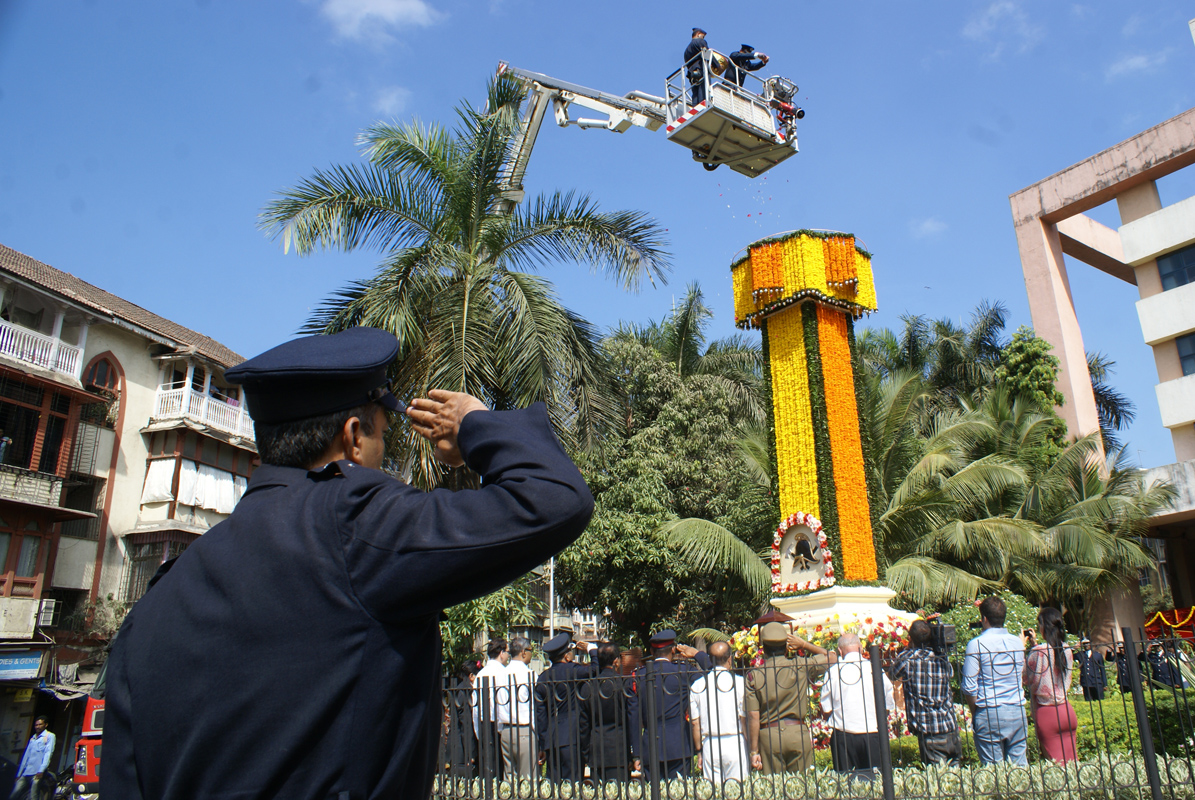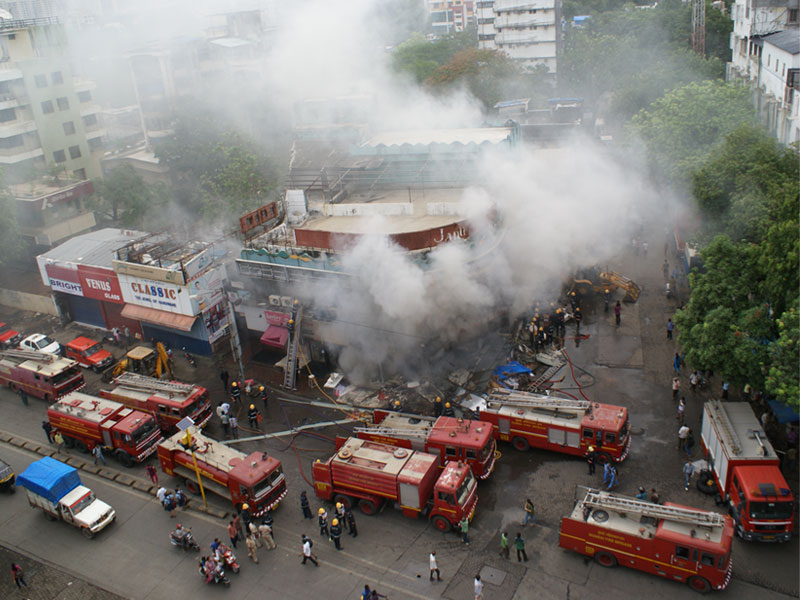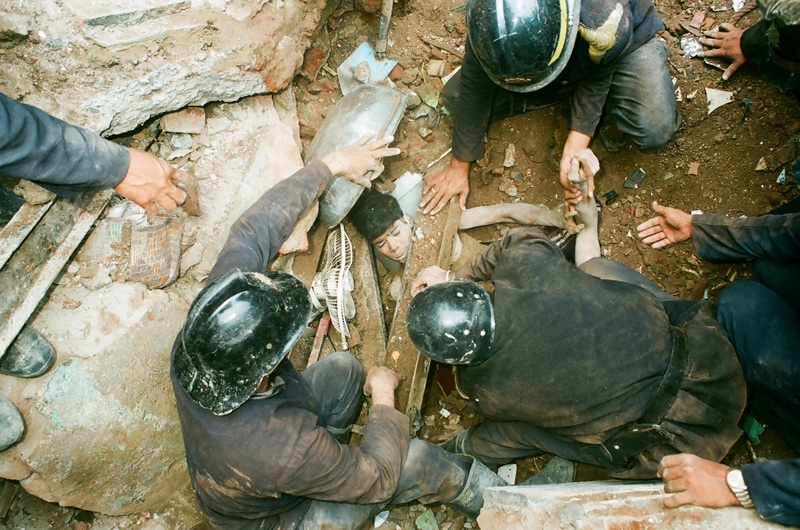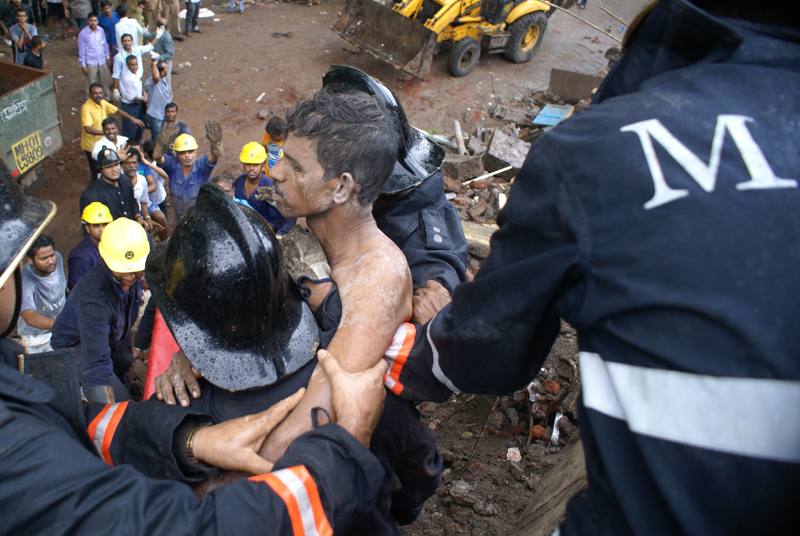Rajnish Kondwilkar
Fire brigade photographer
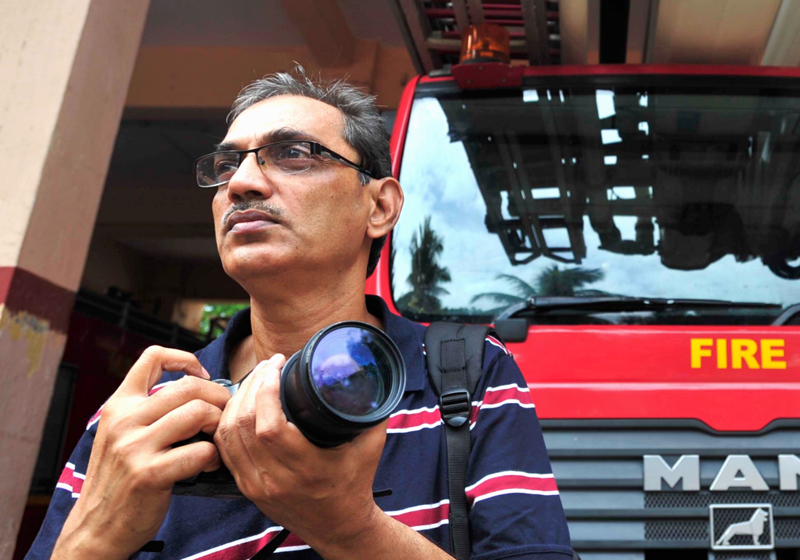
The fiery inferno of raging fires, dangerous destructive violence of riots, Domestic LPG and electric fires, a building collapsing like a tower of playing cards and other fearsome damaging and sometimes lethal disasters; Rajneesh Kondwilkar, working with Municipal Corporation of Greater Mumbai fire brigade in the post of Photographer, has experienced the horror and risk of all this and more in his career spanning more than 32 years. He is retiring on 31st July 2021 after 32 years of very excellent work.
He loved photography from an early age. He used to visit his friend’s studio and darkroom. Out of keen interest, he learned to develop black & white films, making prints and enlargements.
In appreciation of his avid interest in photography, his sister gave him his first camera, a Pentax MX. With a basic understanding and rule of thumb for exposure, F5.6: S 60 and some basic knowledge of flash, he started his photography.
After his school education, he joined the Sir JJ School of art certificate course. He started shooting domestic ceremonies, birthdays and even some photography at Christian funerals.
Later he joined a studio by Mr Rajyadhyakhsha at Lamington Road, Mumbai. The work was film developing and printing. Family portraits were shot against typical background drapes, an old chair, flower pot on a pedestal, very formal. He learned retouching by watching other experts. Always eager to watch and learn how the studio work is done, select angles for photography and other techniques over the time he became more proficient. He observed and studied newspaper photographs, magazine pictures to understand more about photography.
BMC (now MCGM) Fire Brigade completed 100 years in the year 1987. A need for a photography department was felt and so it was established. A Darkroom was set up, Rolleiflex camera was purchased. Initially many people used to work there. Then a professional photographer Mr Gul handled the darkroom. Rajneesh’s sister worked at KEM hospital and saw the notice for the post of Photographer in the Municipal fire brigade in 1987. He promptly applied, was selected and joined in 1988.
He started working by following major calls, special disaster calls, to photograph the disaster and rescue work. These photos were used to educate citizens about safety in using LPG, Electric equipment and wiring, to avoid short circuits, gas explosions.
He did his Black & white film developing, printing from negatives. Slide show presentations were prepared from these photos for interdepartmental training to fire fighting officers and staff.
He joined on 1st November 1988., The next day on 2nd Nov 1988, It was Diwali. There was a big blast at the Bharat Petroleum plant at Mahul. Area of 3-4 sqr km was destroyed. Vehicles, trucks were destroyed completely. People working on the spot were charred. It took a week to control the fire. Slides were prepared utilizing the photographs taken at the disaster site. A slide show presentation was used in discussing issues relating the fire fighting. AMC, DMC, MC, top fire officers and high-level petroleum refinery representatives participated in the.
The photographs helped in the post mortem investigation of how & where the fire started, how it was controlled and doused, the method of utilizing fire fighting pipelines and other equipment, the procedures followed, pros and cons in them. It helped in deciding how to improve, what care needs to be taken, for training fire officers in deciding precautions to be taken, plan of action. Photos were used in the preparation of modules for awareness in people,
He narrates his experiences, “I have photographed riots and other disturbances, street fights. The first fire attended at BPCL was a shocking experience. The enormous fire, destruction, loss of lives, charred remains of people working there were very disturbing. But still, I managed to document. It helped in finding out exactly what happened.” At the site of Kurla junk shops fire, drums were blowing up and were thrown up high in the air. His superior suffered burns due to hot fallout from the burning drum. Rajaneesh was a few feet behind and was fortunately unaffected. He says there is always a risk. “Most of the time I worked without full safety equipment. I had no assistant. I even have to cover incident calls outside Mumbai, up to Mumbra, Panvel.
He talks about the risk, “At Poonam chambers, Worli building collapse, we were removing casualties. The moment we came out, that portion of the building collapsed. A few seconds delay and we would have gone under the debris. One gets used to this and keeps on doing his duty to the best level.”
About some of the harrowing memories, he says, “I never discuss these incidents at home. But at the Kumbharwada, a building collapsed, there was a lady with a child in her arms; both were under the fallen building debris. We could not save them. That day I cried silently at home.”
In MCGM, the photography equipment was not updated, it was difficult to acquire the latest digital cameras and other accessories. Otherwise much better work could have been done. In the film era, have to use 100 ASA films, 400 ASA fast films were not available. Even buying a hair drier to dry negatives and prints was rejected. adverse comments were given on file.
He continues, “At Mazgaon docs, a lady was under the collapsed building; she was conscious and talking till the last moment but we could not save her. These sad memories are very disturbing. When we save someone, the person trapped is taken out alive, that’s the pleasure and satisfaction of this job.”
Rajnish retired recently and this article is an ode to his hard work in the field of photography.
Written & Transcripted by Anirudha Cheoolkar


